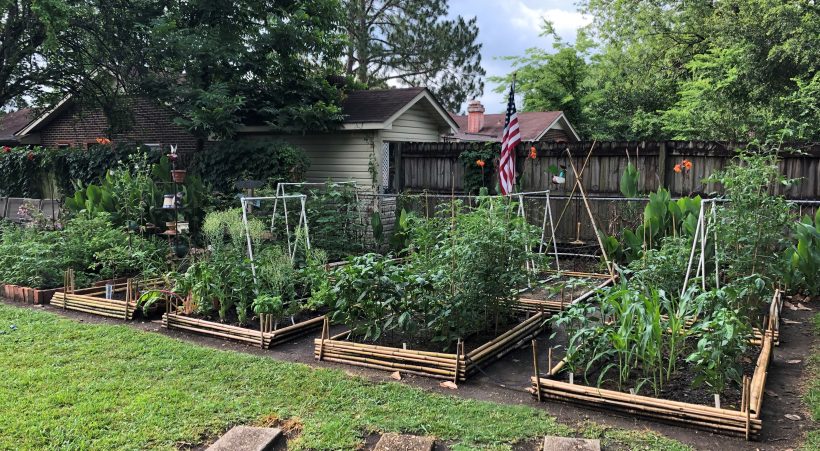By Henry Lucas
My first memories of spending time in a garden came when I was between 4 and 5 years old. I remember long rows of corn, purple hull peas, lima beans and watermelon hills that my dad planted in our garden while he was stationed at San Diego, CA. To me it was a wonderland as big as any farm that could possibly exist. After he retired from the Navy, we moved back to his home state of Alabama and that’s when gardening became farming: instead of rows, we now had acres of corn, peas, beans, watermelons, okra and tomatoes. We could grow almost anything in the Chilton County red dirt just by adding a little cow manure to the soil.
When I had my own family and enough back yard to turn around in, I decided it would be a good idea to start gardening again, for relaxation and to add fresh produce to our table. My garden isn’t nearly as big as what I grew up taking care of, but my 20’x30’ section of the backyard has allowed me to recapture some of that feeling of joy I had growing up “in the dirt.” A few years in I came to realize the long rows of veggies weren’t producing as much as I’d hoped they might, and constant cultivating of the soil to stay ahead of the weeds was becoming rather tiresome. After researching what I could do to cut down on the back-breaking work and small yields I found information on raised bed and Square Foot gardening. I found I could plant more in a square foot and have more varieties of produce, which meant more harvest and less work. I had plenty of bamboo growing in my backyard, perfect for making raised planters on a scale of 4’x7’ — all free, natural and a renewable resource when poles needed replacing. I have built up the soil level over the years with compost from my grass cuttings and kitchen waste, avoiding the use of commercial fertilizers as much as possible. I’m still experimenting with the right combination of companion plants used to attract bees and other beneficial insects to my garden.
Sharing my gardening with my grandchildren is a particular pleasure. They love finding earthworms and other critters in the soil, get excited when they visit to find last week’s blooms are becoming something we’ll have on the supper table, and they’ve both spent plenty of time with their grandmother, shelling fresh-picked beans and peas, listening to her reminisce about her special memories of shelling beans and peas with her mother and grandmother. I hope that one day they’ll find a corner in their yard where they can put in a garden, “just like Pop’s.”
After I retired late in 2018, I ran across information about the Master Gardener’s course, and I jumped at the opportunity. With this program I have learned how to properly prune trees and shrubs. I’ve enjoyed having a refresher course in plants physiology and learning what Genetically Modified Organisms (GMOs) really are. We have learned what makes up soil (not dirt) through central Alabama, why soil testing for proper pH is so important for plants to survive and what additives are necessary to correct the pH. All of the nuts and bolts are important, of course, but what I most appreciate about the Master Gardener course is the opportunity it gives me to spend time with other folks who love getting their hands dirty, and giving something back to my community through volunteer opportunities.
Henry Lucas, an intern in the 2019 Master Garden Class, lives in Montgomery. For more information on becoming a master gardener, visit www.capcitymga.org or email capcitymga@gmail.com.
 Part of the Alabama Cooperative Extension Service (ACES)
Part of the Alabama Cooperative Extension Service (ACES)
